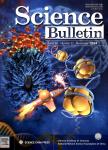Surface pollen assemblages as indicators of human impact in the warm temperate hilly areas of eastern China
Surface pollen assemblages as indicators of human impact in the warm temperate hilly areas of eastern China作者机构:College of Resources and Environmental Sciences and Hebei Key Laboratory of Environmental Change and Ecological Construction HebeiNormal University Shijiazhuang 050016 China
出 版 物:《Chinese Science Bulletin》 (Chin. Sci. Bull.)
年 卷 期:2011年第56卷第10期
页 面:996-1004页
核心收录:
学科分类:070903[理学-古生物学与地层学(含:古人类学)] 0709[理学-地质学] 07[理学]
基 金:supported by the Key Program of the National Natural Science Foundation of China(40730103) the National Natural Science Foundation of China(40672107 and 41071132) Hebei Natural Science Foundation(D2008000186 and D2009000300)
主 题:丘陵地区 中国东部 人类影响 暖温带 孢粉 地表 花粉浓度 十字花科
摘 要:Investigation of 78 surface pollen samples from warm temperate hilly areas of eastern China shows that pollen assemblages in areas of different land use are significantly *** concentrations in wastelands are higher than in plantations;these,in turn,are higher than in farmlands;implying that pollen concentration decreases with increasing human *** pollen dominated by Pinus and Quercus is common in all *** pollen percentages are higher while shrub pollen,fern spores and fern allies are lower in farmlands than in *** pollen is only detectable in and near farmlands;its percentages and concentrations decrease in *** and Cruciferae pollen percentages average 16.7% and 6.7% in farmland respectively,but Cereal reduces to less than 3% and Cruciferae to less than 0.5% in nearby *** coordinates analysis and clustering analysis indicate that pollen assemblages from farmlands are distinguishable from those under other vegetation *** of Poaceae,Chenopodiaceae,Artemisia,and Compositae pollen and Selaginella sinensis spores are closely related to human activities,and their types and frequencies indicate intensity of human *** spatial distribution of crops,Chenopodiaceae,and Artemisia reflects changes in both natural environments and human *** of cereal and Cruciferae pollen,for example,increase with decreasing altitude,but decrease with increasing *** pollen assemblages under artificial and human-disturbed vegetation in hilly areas may aid understanding of human impacts on the plains during the early-middle Holocene.



